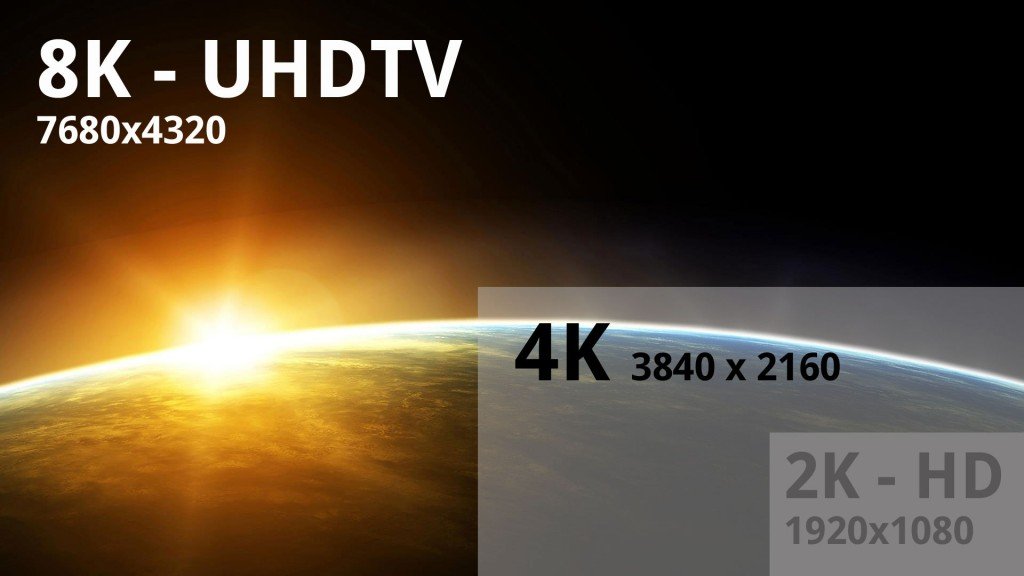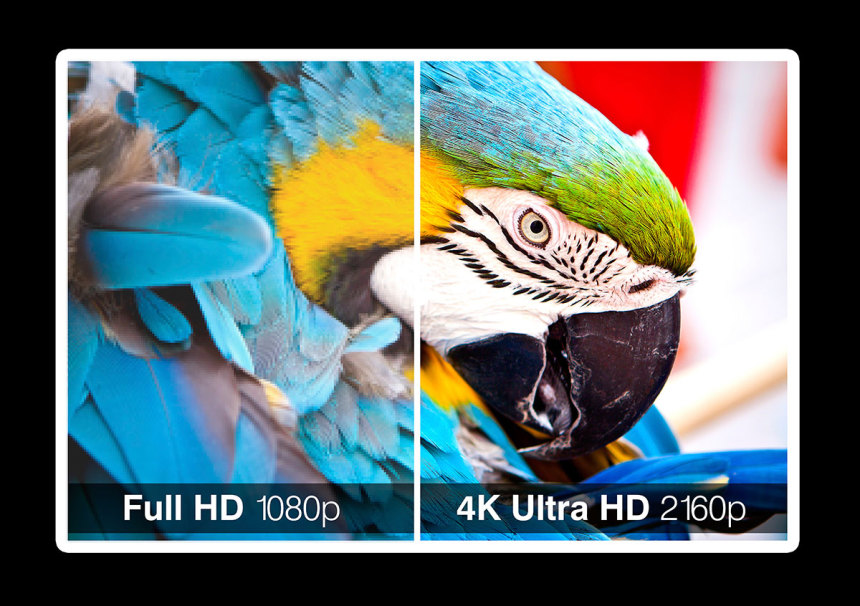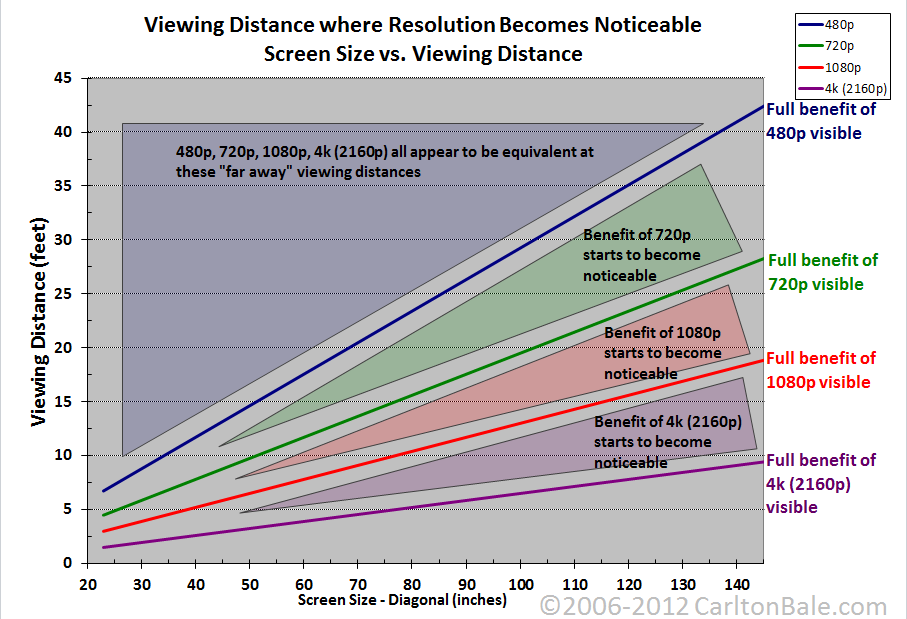
What is 4K?
4K technology seems to be on the cusp of taking over the HD digital media world, from TV screens to computer monitors to cameras and projectors, 4K screen resolution and all of its accompanying features are starting to circulate widely.
Currently, the best display of UHD (Ultra High Definition) technology is the 4K resolution TV and many of these have been emerging on the market since mid-2013, although 4K monitors have been around since 2013 and 4K resolution film and photo cameras commercially since at least 2012.

Visual Display
4K display has to consist of at least 3,840 pixel (horizontal) x 2,160 pixels (vertical) of resolution. This puts it on the top of the current scale of digital resolutions in which the bottom is occupied by SD (Standard Definition) (450 x 540 pixels), HD with 720 pixels and Full HD at 1080 pixels. 4K has four times as many pixels as Full HD.
The beauty of 4K is that it packs so much visual data onto the screen, that the pixels can be absolutely minuscule while still displaying 10 bits of data at a time. This enables you to get much closer to the screen without the grid-like structure of the image itself becoming visible, this means you can comfortably watch a much larger screen from the same seating position as your current Full HD panel.
Think of an Apple Retina display, but at a higher resolution, and on an 80-inch screen that is UHD. To even be able to notice the individual pixels, you’d have to put your face right up against the display.

4K Streaming?
But what about online video? The format is supported by YouTube, Vimeo, Netflix and Amazon at this time with many more on the way, but the main barriers to entry in 4K streaming video continue to be the cost involved with shifting production for creators and bandwidth issues for viewers.
Google is aiming to make 4K video more accessible with changes coming to their rendering algorithm on Chrome, not to mention the huge boost in bandwidth if you are lucky enough to be getting Google fibre. But all that being said, should you be producing your Web content in 4K today?
4K streaming is a short-term future goal for many web videos sites. Superfast fibre optic broadband has given web video streaming services a possibility to stream 4K video to households.

Benefits of 4K
Benefits of 4K visuals are that the image is brighter and more vivid, there is also more detail due to having many more pixels. The viewing distance is also smaller than HD resolution. Moving over to 4K could be considered a form of future proofing for your content and for global marketing of your video(s). Also, the gap between 4K and 8K is much smaller than the gap between 1080 (HD) and 4K.
8k & the future
8K resolution or Full Ultra HD (FUHD) is the highest ultra-high definition television (UHDTV) resolution to exist in digital television and digital cinematography. 8K refers to the horizontal resolution of these formats, which all are on the order of 8,000 pixels, forming the total image dimensions (7680×4320). 8K is a display resolution that may eventually be the successor to 4K resolution. 1080p is the current mainstream HD standard, with TV manufacturers pushing for 4K to become a new standard by 2017, although the feasibility of such a fast transition as well as the practical necessity of a new standard is questionable.
In many ways, the infrastructure is already in place and providers need to continue to explore ways to compress content so mass market higher resolution formats will not put too much pressure on their networks. Codecs such as HEVC H.265, and possibly even future versions of Google is VP9, are set to be key enablers to make ultra-high definition formats more practical. To place this in context, HEVC’s compression rate could see 4K needing only between 10-20% more bandwidth than 1080p.
From the technology providers to the producers, and as we’ve seen from some broadcasters, investment in 8K is also underway on the programming side. This is evident as with the Fifa 2014 World Cup where Sony and Fifa worked together to film parts of the tournament in 4K. This was a big test to check the implementation of the new system. We may not be too many World Cups away from audiences being put right at the centre of the action.
The delivery of 8K content to viewers at home is still very much in the experimental stages but it may not be as far away as we may imagine. The distribution infrastructure has to improve and broadcasters and their technology suppliers may be wise to begin future-proofing their means of production and delivery.




